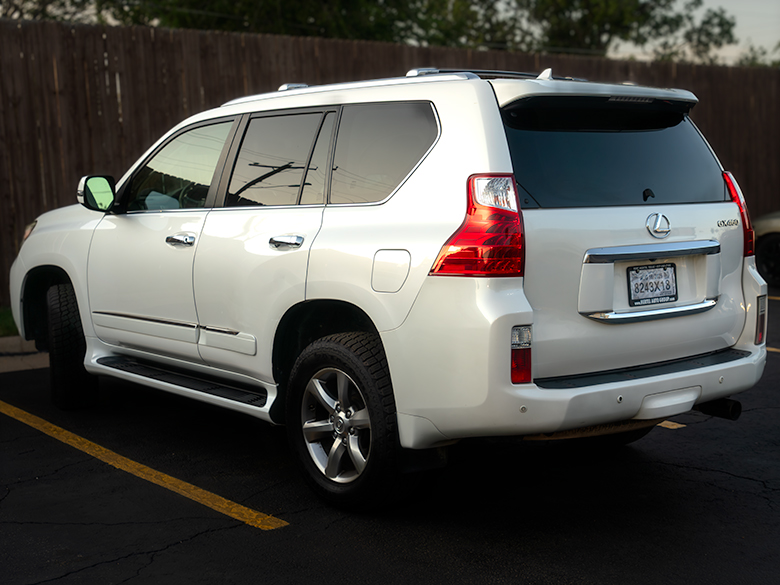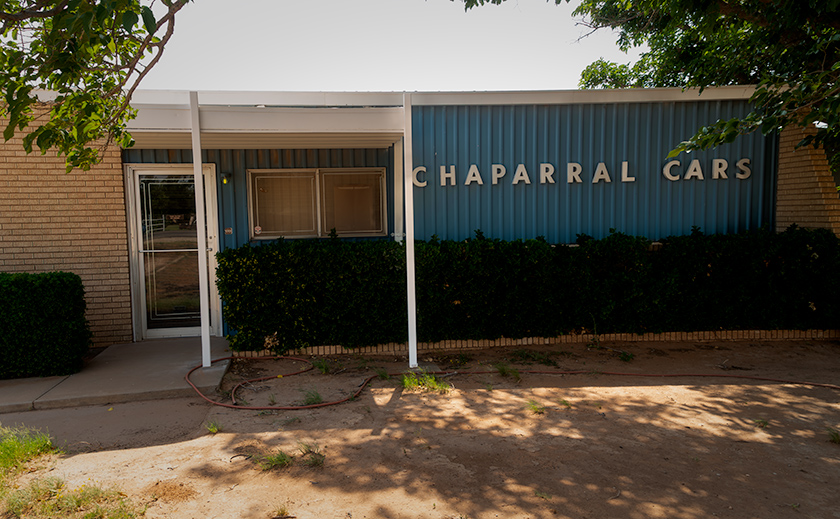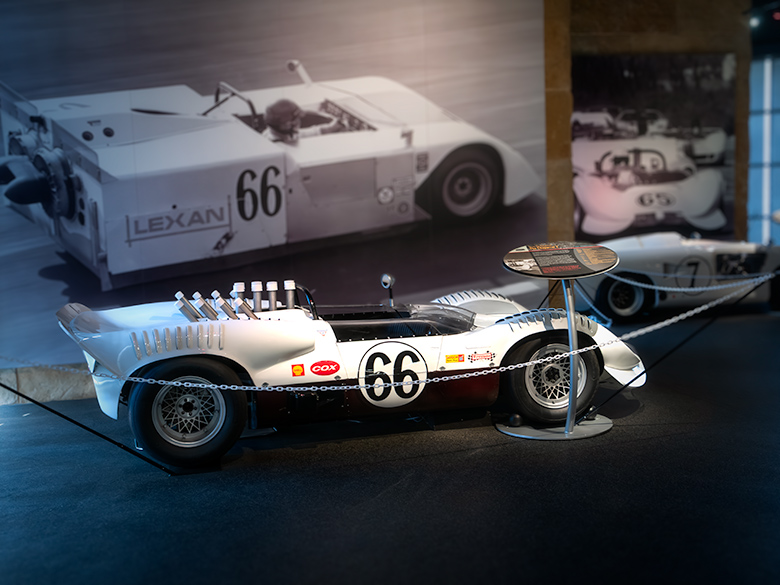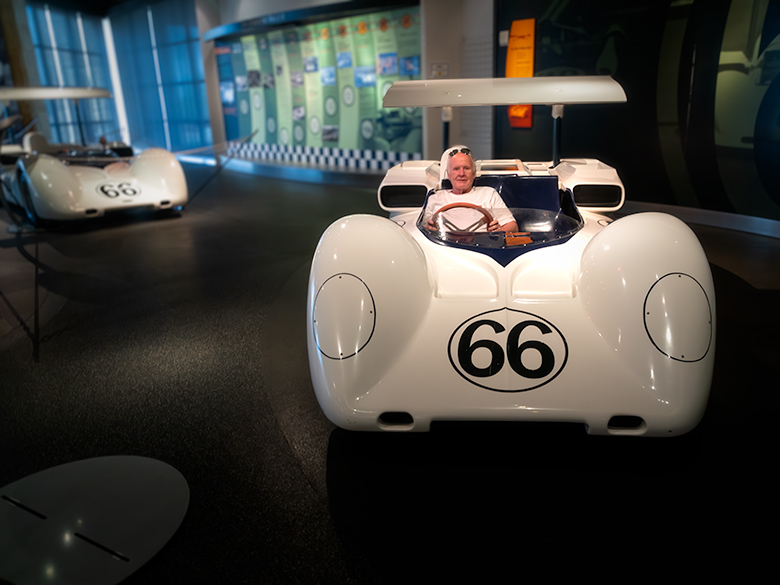
Prologue: A Lexus, a Mission, and a Prayer
We didn’t mean to find religion in Midland. The plan was simple: rescue a used Lexus from suburban exile and steer it west through as many two-lane highways as Texas would give us. But somewhere between the dealership handshake and the first real dust cloud, the road started whispering old names—Rattlesnake Raceway, Chaparral, Hall. And just like that, Moby’s maiden voyage turned into something else. A memory lane detour. A gearhead’s homecoming. A dusty road trip with a fiberglass finish line.
Search History Confession
I’ve tried to buy my last truck three times now.
I was chasing a unicorn: a rugged, off-road-capable rig that could tow a decent trailer without guzzling fuel like a frat boy at happy hour—something practical, reliable, and just adventurous enough to justify my search history.
First up was the 2010 Mercedes Bluetec diesel. Legendary for its longevity—until we learned that fixing one requires a certified priest and a small loan. You don’t own a Mercedes diesel. You lease the illusion of German competence and hand over the keys when it starts acting moody.
Next was a Jeep Grand Cherokee diesel. Apparently, I thought doubling down on questionable diesel tech would fix things. The Jeep promised capability, but delivered paranoia. It was the kind of vehicle for which the forums suggest “covering the warning lights with tape” as a legitimate repair strategy. We rolled the dice and lost. Badly.
That led us to the Toyota RAV4—affectionately (and accurately) nicknamed The Turd. It was basic, dependable, and as exciting as toast. But it never broke. Not once. Other than an oil change now and then, it asked for nothing. That reliability sold me on Toyota. Its only flaw was its popularity—we kept losing it in parking lots full of identical white RAV4s.
Departure: Fort Worth or Bust
I dreamed of upgrading to a 4Runner, or if I hit the lottery, maybe even a Land Cruiser. But during the pandemic, I stumbled onto the Lexus GX. Built like a tank, babied by its original owners, and often confused with its global twin, the Land Cruiser Prado.
That’s when I found Moby. Right price. Right year. No golf club residue. A proper rescue.
And maybe—just maybe—third time’s the charm.
No sooner had I shown Anne the ad and rattled off a litany of reasons why this was the one, she didn’t roll her eyes—which, in our house, is as close to a green light as it gets. I was on the phone with the dealer in under a minute.
He offered to pay off the Turd’s loan as a trade-in. That’s all I needed.
I called the bank, got a loan, and walked past Anne’s desk wearing a grin I couldn’t wipe off with sandpaper. She looked up and said, “When are we going to Texas?”
“Tomorrow. Do you have the bags packed?”
We wanted to get to Fort Worth fast—sign papers, grab Moby, and head home the same afternoon. So we pointed the nose east down I-40, set the cruise control four miles over the speed limit, and overnighted in Tucumcari. Damn the mileage.
We arrived at the dealership five minutes ahead of schedule. Made sure all the parts were where they were supposed to be, took a quick spin around the block, rolled down the windows, and confirmed that every radio station was broadcasting some version of Jesus.
We signed the papers, shook hands, and pointed Moby west—all within two hours.
Cruising Altitude: Sweetwater, Maps, and Mild Enlightenment
With the crisis behind us and the paperwork complete, we slipped out of Fort Worth’s gravity via the nearest freeway ramp. The adrenaline faded, and with Moby quietly humming beneath us, we stopped thinking like panicked buyers and started thinking like explorers again.
Texas unveils itself at under 60 mph. That’s when it stops being a blur of Buc-ee’s and billboards and starts showing texture—peeling paint on roadside barns, abandoned gas pumps that still smell like leaded fuel, diners where you get a fried egg and a free opinion.
We started making what can only be described as strategery—we were in Texas, after all. Still crawling through rush hour traffic, we tried to figure out what each mysterious button on Moby’s dash did.
“What’s this one do?”
Click. Gospel radio gone. Silence. Blessed silence.
Anne didn’t even look up. Her nose was deep in a Rand McNally atlas and the Hotels.com app—working both like a desert octopus with a sense of mission.
She found us a room in Sweetwater. Far enough to make the next day productive, close enough not to arrive exhausted. No frills, no tiny shampoo bottles, but plenty of truck parking.
Moby floated along the highway, smooth in that soft-suspension, Lexus-does-clouds kind of way. We clicked “sport mode,” hoping it would sharpen the feel. It helped… a little. The steering still didn’t exactly command the road—it mostly just suggested a path and hoped for cooperation.

The Pivot Point: “Midland’s Not Far…”
That night in the motel, maps and screens spread across the bedspread, we sketched out a scenic route home. Carlsbad Caverns, White Sands, a couple of ghost towns—enough interesting detours to stretch the trip out a day or two. It was a solid plan.
Then I said it.
“Midland’s not far. That’s where Jim Hall’s from. I wonder if Rattlesnake Raceway is still there—we could swing by, snap a picture through the fence.”
Anne, still in full mission-control mode, tapped her screen and paused.
“Uh… it says the cars are on display. Like, a whole collection. At the Permian Basin Petroleum Museum.”
My heart didn’t just sink—it did something complicated and internal, like a piston misfire mixed with a gear shift into childhood.
The Chaparrals weren’t gone. They weren’t rumors. They were right there.
Preserved. Waiting.
So much for the scenic route.
Sorry, Carlsbad. Sorry, White Sands. We had priorities now.
The next morning, we topped off the tank and I checked the tires. Three were ten pounds over. The fourth was off in the other direction entirely, which explained why Moby kept trying to change lanes on his own. I aired them all down to spec. The wandering stopped. So did the weird floaters that had been dancing across my vision every time we crossed a tar strip.
Orange Barrels and Slalom Enlightenment
Texas highway construction didn’t help. For a state that claims to loathe federal oversight, they sure know how to burn through Washington’s asphalt budget. We saw more “Reduced Speed – Fines Double” signs than we saw exits. What we didn’t see were “End of Construction” signs. You just drove forever, unsure whether you were still in a work zone or just participating in an elaborate traffic psychology experiment.
Eventually, I got bored. The orange barrels were endless. The vague steering begged for something to do. I remembered a video I’d seen at an SCCA convention—some guy weaving a Corvette through construction barrels like it was an autocross course.
So I started slaloming.
Not recklessly—just a gentle flick left, then right, every few hundred yards. Testing Moby’s transient response like we were at a solo event. And now I’ve got it.
Moby handled it fine. Bit of lean. Bit of grace. Still tracked true.
Anne glanced up from her Kindle. “Are you doing that on purpose?”
“Yes,” I said.
She went back to reading.
Midland: Dust, Oil, and Genius
Midland felt like Bakersfield with more swagger—flat, industrial, and humid in a way that didn’t sit on you so much as climb into your clothes. We were still east of the dry line, and you could tell. The air blurred the horizon, and if you walked too fast, it felt like your shirt tried to cling to your chest in self-defense.
The skyline told its own story. Black pumpjacks still nodded along the fence lines, but now white wind turbines spun above them—new tech rising behind old wealth. It reminded me of Bakersfield, where the windmills came first. Funny how the world changes, then loops back—only louder and taller.
This was the environment Jim Hall came from. Oil fields. Open space. Big ideas. He was a free-spirited engineer with a West Texas bankroll, made rich by the very pumpjacks still nodding along the roads we drove in on. He and his racing partner, Hap Sharp, weren’t just car guys—they were oil guys with the freedom to do whatever they wanted. And what they wanted was speed.
In proper West Texas fashion, they started by stuffing big American V8s into lightweight British imports—Birdcage Maseratis, Jaguars, and Lolas. The result wasn’t subtle. These things didn’t drive so much as launch. You mashed the throttle, held on, and prayed the brakes were still where you left them.
But it still wasn’t enough for Jim. He didn’t just want horsepower—he wanted control. Back then, nobody talked about “downforce.” What we believed in was “road-holding weight”—Buicks, Cadillacs, and Hot Rod Lincolns with enough steel to convince the tires to stay put. The imports were featherweights. Hall wanted the best of both worlds—lightweight cars with the grip of a freight train.
So he got to work.
And money helped—a lot.
They didn’t just race. They built a race car factory. And then—because why not—they built their private track just south of town: the famed Rattlesnake Raceway. While other teams were renting laps and standing around with stopwatches, Hall and Sharp were testing on their own turf, on their own terms. They weren’t just timing laps—they wired the track for sector splits so they could pinpoint where gains were made. Hall didn’t just build cars—he composed airflow the way Miles played silence, or Ansel coaxed shape from shadow. It was engineering, sure—but also taste.
Nobody else was thinking like that. Everyone wanted to go fast.
Jim Hall wanted to understand fast.
Rattlesnake Redux: Across from the Boneyard
We’d exited the freeway on Midland’s east side, hoping to catch the track without having to backtrack. I asked Anne to Google Rattlesnake Raceway. Miraculously, it showed up—right there on the map, labeled like it had never stopped mattering. County Road 340.
We turned south, and Anne started navigating by phone.
“Three miles… two miles… one mile… half a mile… quarter mile…”
We passed a cemetery.
“Wait… quarter mile again… one mile…”
We had passed it. So we turned around.
Same thing again. The countdown led straight to the cemetery twice.
“Great,” I said. “They plowed the track and turned it into a cemetery. Or worse—maybe it’s those storage lockers we passed.”
Anne zoomed in. “Wait, does it have an address?”
It did. And it ended in an odd number.
“That’s across the street,” she said. “We’re looking on the wrong side of the road.”
And there it was—tucked into the east side of the road, facing the cemetery like some forgotten shrine across from its own boneyard.
We pulled into the gravel drive, and I got out to see how far my nose could make it through the chain link gate. The track wasn’t gone. Just sleeping.
I wish I had brought the drone.
We spent a few moments in front of the offices, taking documentary photos to prove to the faithful that I’d been there, and then we set off to find the Petroleum Museum—Home of the Chaparral Gallery.

The Chapel of Speed
It turns out the museum wasn’t far—just off the CR-308 exit, tucked along the freeway’s access road. We turned into the drive, which turned into a wide circular drive passing through the portico, and rolled into the parking lot.
The walk to the entrance took us past outdoor displays of towering drilling equipment and a string of Burma Shave–style plaques explaining the local geology. It laid out the timeline of oil: its formation, its discovery, and its exploitation—Midland’s holy trinity.
Inside, it was church-quiet—carpeted floors, climate control, reverent lighting. The air inside wasn’t just cool—it had that archival dryness, like books in special collections or climate-sealed vaults. Corridors fanned out like pew aisles, each leading to a different wing of the museum.
We stopped at the docent’s desk and asked two questions:
“Where are the cars?”
“And how much does it cost?”
We bought two tickets and were directed down the main hall, appropriately marked by a bright yellow Indy car nailed high on the wall. The Chaparral 2K. It wore Pennzoil livery like a crown. I made a snarky comment about displaying a non-Texas oil company.
We spent almost two hours among the cars.
The exhibit traced the evolution of Jim Hall’s obsession with airflow. Each car was more radical than the last, like flipping through a wind-tunnel engineer’s fever dream. Movable wings. Ducts. Sucker fans. Ideas so far ahead of their time, the rulebook had to be rewritten just to keep up.
Anne trailed behind me, listening politely while I tried to explain what I knew about each car. Then we sat down and watched the museum’s film on Chaparral history, which, naturally, did a far better job than I did.
The gallery brought back another name: my friend Gary Wheeler, one of the few aerodynamicists I’ve known personally. He worked for Dan Gurney during that same era and co-invented the Gurney Flap, a tiny lip at the back of a wing that dramatically improved downforce efficiency. He once designed a rear wing so effective it slowed down Kenny Bernstein’s top fuel dragster—just to prove a point.
Gary and Jim Hall never competed directly, but from Gary’s tone, I always knew he respected Hall’s work. Real recognizes real. Both were trying to solve the same problem from opposite directions—Gary pushing the car down from above, Jim pulling it down from below.
We wrapped up—like all good pilgrimages—in the gift shop. I bought an overpriced Chaparral T-shirt and a baseball cap. The docent tried to talk us into a membership in the Chaparral Club, which comes with invitations to special events.
The cars aren’t static. Once a month, they pull them out, top up the fluids, and drive them—one at a time—around that 360-degree circular drive we passed on the way in.
I looked at Anne, eyes wide.
Her stone-cold look shut that down quickly.
And then there was the final photo—me in the Chaparral photo-op car they set up for wide-eyed enthusiasts like me. If I look a little strained, that’s because I was. My 78-year-old backside didn’t fit a seat designed for the lanky Texan, and stopped about three inches short of the actual bottom, so my gut was too close to the wheel to mount it properly.
I wasn’t grinning. I was grimacing—like a kid on a grocery store quarter-horse ride that suddenly tilted too far left.

Epilogue: Finding the Right Vehicle for the Next Chapter
We didn’t talk much for a while.
Anne dozed. Or maybe she just closed her eyes and let the road slip by. I sat behind the wheel, quietly replaying everything—Rattlesnake Raceway, the Chaparrals, the kid I used to be when all of this was new and loud and possible.
Every so often, I’d blurt out another memory.
“Turn nine at Riverside—that was the long banked one. I got to drive it, years later, after we moved to Arizona. Funny how things circle back.”
Anne nodded from the passenger seat—no words needed.
I thought about Le Mans. I would have liked to see them run there, but the Army had other plans for me. That’s life. Straightaways cut short, turns you didn’t expect.
We left the museum full of memories—climbing into Moby with the sense that maybe, just maybe, the next adventure had already begun.
And this time, we’d brought the right vehicle for it.
Not a bad trade.
Until next time, stay cool, steer steady, and if the air starts to feel like soup, you’ve gone too far.
jw
